Welcome videophiles, home theater hobbyists and discerning TV buyers! It's time for this year's TV Shootout. The annual event, now in its 19th year, is hosted by Value Electronics and Dealerscope. The TV Shootout brings the top flat panel TVs together in one room so a winner can be named; a new "King of TV" crowned. As with last year, the event has been broken up into two days: on day one (September 30, 2023), we're focusing on the top 4K TVs while day two (tomorrow) will feature 8K televisions.
As in recent years, the event is being held at The Company building in Manhattan, just a stone's throw from Grand Central Station (but watch out where you throw that stone, these TVs are expensive!). The venue has a large light-controlled room, perfect for comparing high end TVs.
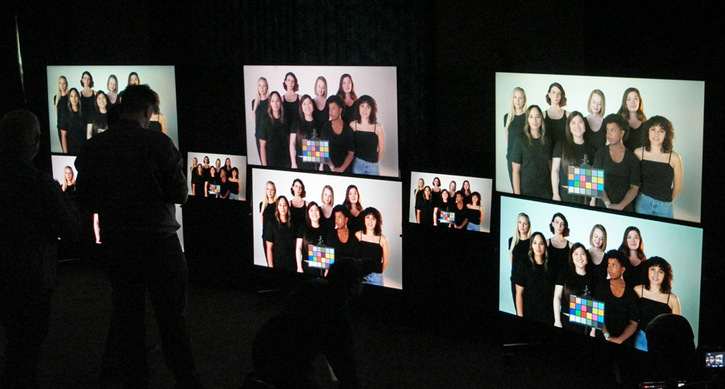
The 4K TVs being evaluated at this year's event are all the same size, measuring 65 inches from corner to corner. The TV technologies on display include OLED (Organic Light-Emitting Diode), QD-OLED (Quantum Dot Organic Light-Emitting Diode) and MiniLED (LCD panels illuminated by high precision direct LED backlights).
The following 4K TVs battled it out at the 2023 4K TV shootout:
Samsung Display's latest QD-OLED panel is being used in both the company's own QN65S95C TV as well as in Sony's XR65A95L TV. These sets use OLED panels with pure blue OLED elements combined with a Quantum Dot color layer to generate pure primary red and green sub-pixels. These three primary color combine to form all the colors of the rainbow. The main difference between the Sony and Samsung QD-OLED sets are the video processing, the industrial design of the chassis, and the Smart TV platform. Samsung uses their own Smart TV OS while Sony has opted to use Google TV as its Smart TV platform. Each company uses its own proprietary video processing to create the images on screen. The Samsung and Sony QD-OLED TVs are said to offer "up to twice the brightness" of last year's models.
LG's OLED65G3PUA OLED TV features the company's own WRGB OLED panel, so-called because the unit uses white OLED elements shone through a color refiner to generate the red, green and blue OLED sub-pixels which combine to create the full color image. LG's G3 OLED TV features a new MLA (Micro Lens Array) screen design which offers a significant brightness bump over last year's G2 model. The design also helps minimize distracting room light from reflecting off the screen and washing out the image.
On the MiniLED side, all three MiniLED TVs use LCD imaging panels with an array of MiniLED backlights providing illumination. By providing hundreds of local dimming zones, these TVs can approach the contrast, uniformity and image quality of OLED and QD-OLED TVs and they can do that with higher overall brightness. Hisense is a new competitor in the TV shootout, Samsung is returning with its latest MiniLED/LCD set and Sharp has returned to the shootout for the first time since 2011 when it's "Elite" model LED/LCD TV grabbed the competition's first victory for an LED/LCD television.
Returning as Master of Ceremonies this year was our friend Caleb Denison, Senior Editor of Digital Trends. Caleb gave attendees and judges a brief overview of the various technologies featured on each of the contenders. He also helped guide the judges through the testing methodology, pointing out what to look for in each test pattern or clip. This year, the show hosts had not one but two professional BVMs (broadcast video monitors) as references to compare to these consumer displays. Sony's dual cell LED/LCD BVM-HX310 monitor sells for about $25,000 and is the standard display used by broadcasters, TV and film mastering professionals worldwide. For the objective tests, judges were tasked with comparing the six competitors with the picture on the broadcast monitors. The closer their picture was to the reference, the higher the score.
This year's judging panel includes professionals from the film and TV industry, TV reviewers and content creators who specialize in audio/video technology. Judges include Phil Holland, Brian Stout, David Mackenzie, David Medina, Gregg Tarr, Richard Drutman and Kenneth Almestica.
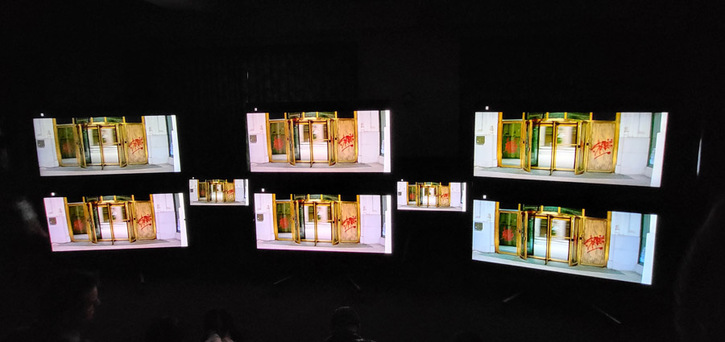
The factors that each judge was asked to consider on each TV included motion resolution, contrast, peak brightness, picture uniformity, color accuracy, color volume and shadow detail (among other things). Tests included SDR (Standard Dynamic Range) and HDR (High Dynamic Range) content with all sets professionally calibrated and picture enhancement features disabled to ensure a level playing field. Caleb told us the team had selected no fewer than 101 test patterns and clips for this year's competition. When it came down to it, not all of the clips were used (there was simply not enough time), but the volume of tests should give you some idea about how thorough the event hosts took their work.
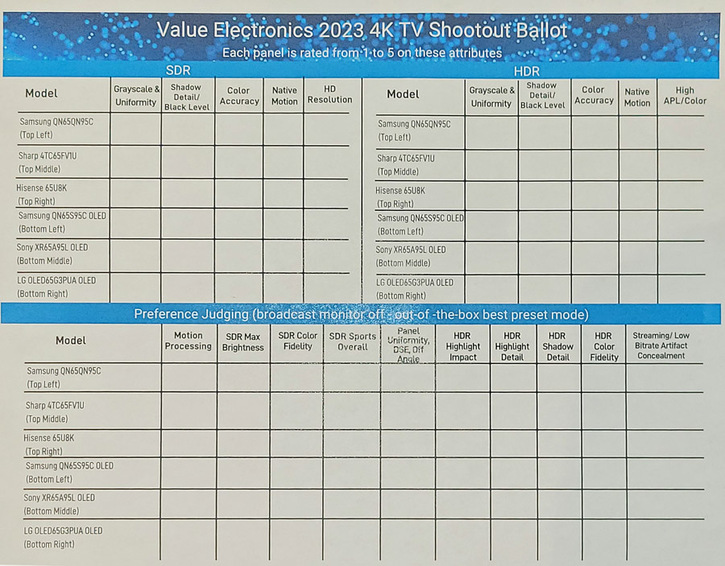
After the "objective" tests of the calibrated TVs, which consisted of test patterns and video clips each intended to highlight different areas of picture performance, the room lights were turned on and the TVs were set to their standard out-of-the-box settings. Each TV was measured and set to its most accurate out of the box mode -- normally "Cinema" or "Movie" mode. This is to represent what most consumers will see when they buy one of these TVs. This batch of judging was more subjective. In these tests, each judge was tasked with scoring the TVs based on which one they personally thought looked best on a variety of content. And while the results of these tests were tabulated and shared, they were not counted toward the "official" scores for the "King of 4K TV."
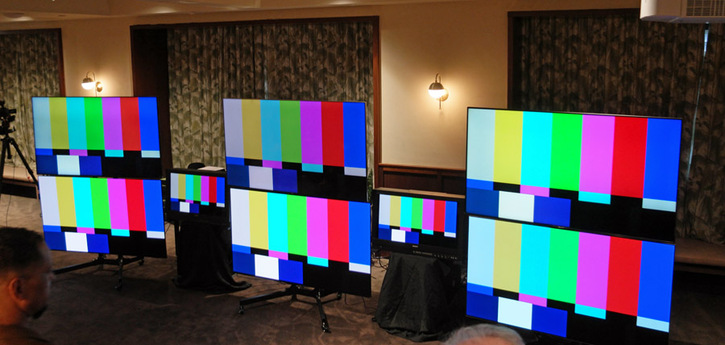
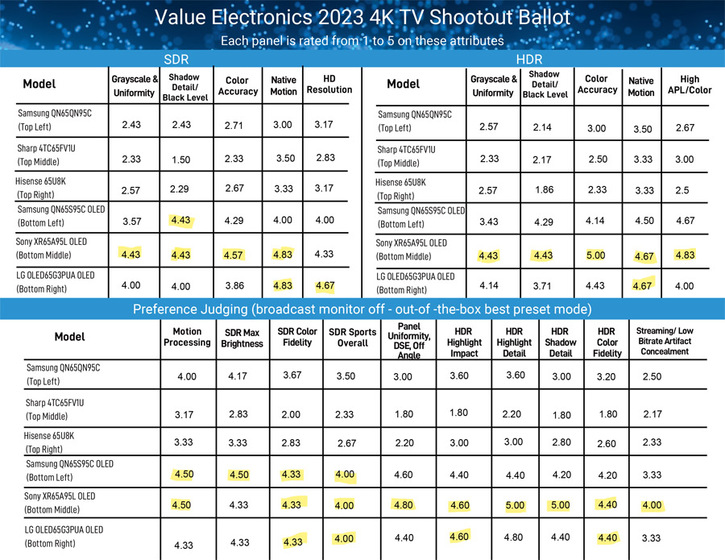
The winner in all three categories: SDR, HDR and bright room/out of the box settings was the Sony A95L QD-OLED. This means the new "King of 4K TV" is the Sony A95L QD-OLED TV. Its overall average scores were 4.52 out of 5 for SDR, 4.45 for HDR and an overall average of 4.49 out of 5. In the out-of-the-box/preset categories, the Sony A95L earned a composite score of 4.5 out of 5.
The LG G3 OLED finished the competition in second place with an average score of 4.26 (out of 5) on the SDR tests, and 4.19 on the HDR tests. Its overall average score was 4.23. In the out-of-the-box/preset categories, the LG received a composite score of 4.29. Samsung's S95C QD-OLED finished the competition in third place overall with a composite score of 4.14 overall. It received a 4.06 (out of 5) for SDR tests and 4.21 in the HDR tests. This means is actually came in second to the Sony QD-OLED in the HDR tests, just slightly ahead of the LG, but its overall average score considering all categories was 15 hundredths of a point below the LG. The Samsung's out of the box/preset score was 4.25.
Clearly it was a tight race this year, with all of the OLED TVs finishing with very strong scores overall. Any of these would make a fine choice for your living room. Thanks to Robert Zohn for hosting this year's shootout.
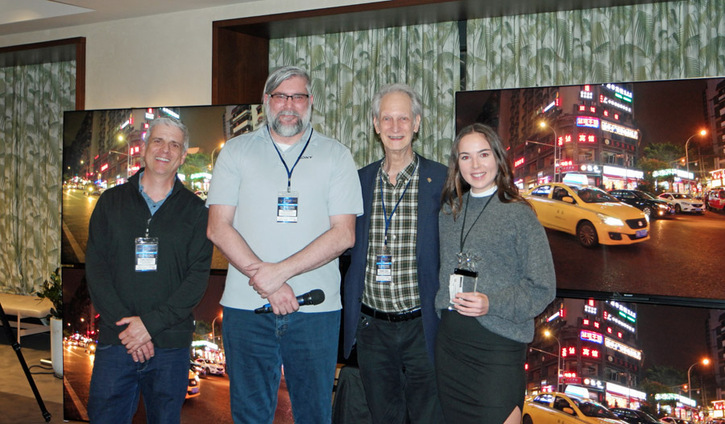
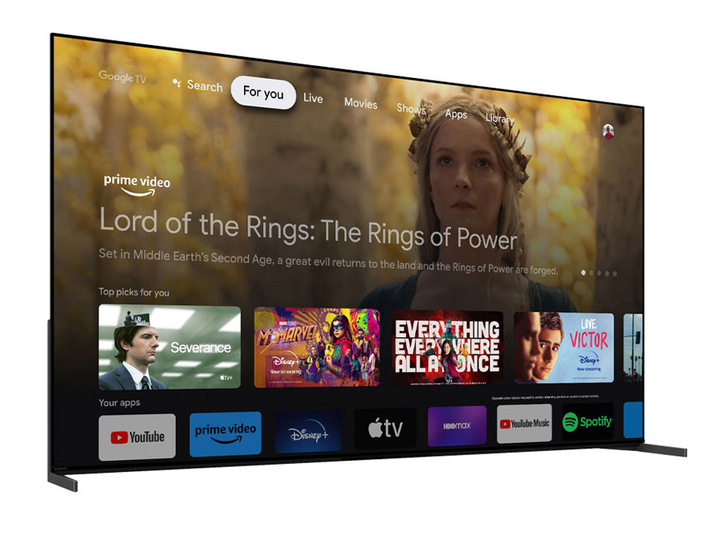
Related Reading: